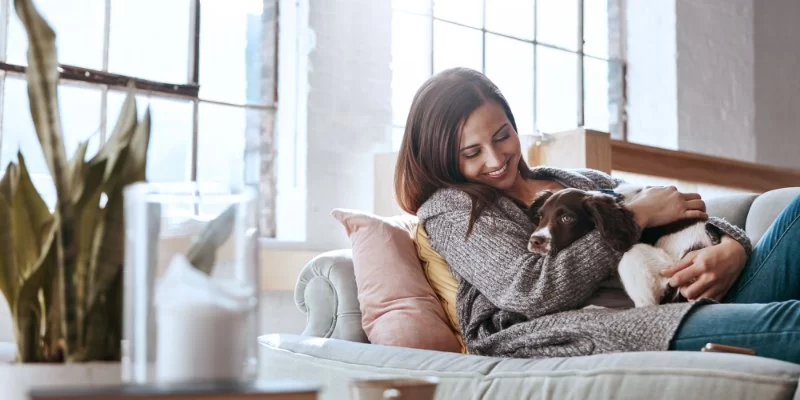- 1. Why Pets Need Time to Adjust to New Homes
- 2. Understanding Your Pet's Behavior During Transitions
- 3. Practical Steps to Help Your Pet Adjust
- 4. How to Create a Comfortable Environment for Your Pet
- 5. When to Seek Professional Help for Your Pet
1. Why Pets Need Time to Adjust to New Homes
Bringing a pet into a new home or introducing them to a different routine can be a stressful experience for both the pet and the owner. Just like humans, pets can experience feelings of anxiety, confusion, and discomfort when their environment changes. Whether you’ve just adopted a new pet or are relocating with your furry friend, it’s important to be patient and understand that they need time to adjust.
Pets are creatures of habit, and changes in their surroundings or daily routines can disrupt their sense of security. It’s essential to provide them with the support and structure they need to feel comfortable and safe in their new environment. In this article, we’ll explore some effective ways to help pets adjust to a new home or routine, using practical tips and natural remedies that every pet owner should know.
2. Understanding Your Pet's Behavior During Transitions
When moving to a new home or changing your pet’s routine, it’s crucial to understand the behavioral changes they may exhibit. Pets can’t communicate their stress and confusion the way humans do, so they often express their emotions through behavior. Here's what you might observe:
1. Increased Anxiety or Stress
Your pet may show signs of anxiety, such as barking, meowing, excessive licking, or even hiding. This is often a result of unfamiliar surroundings, new people, or a change in their schedule. Animals thrive on routine, and disruptions can make them feel unsettled.
2. Loss of Appetite or Eating Habits
One of the common signs of stress in pets is a change in eating habits. Your pet might refuse to eat, or they may eat much less than usual. This can be a temporary response to the unfamiliar environment or routine. Be patient and offer familiar food to help them feel more secure.
3. Destructive Behavior
If your pet begins chewing, scratching, or engaging in other destructive behaviors, it could be due to stress or boredom. Chewing on furniture, shoes, or other objects can be a sign of frustration or a need to relieve anxiety. Redirecting this behavior is important to prevent long-term issues.
3. Practical Steps to Help Your Pet Adjust
Helping your pet adjust to a new home or routine requires patience, consistency, and understanding. Here are some steps you can take to make the transition easier for them:
1. Maintain a Routine
One of the best ways to help your pet feel secure is by maintaining a consistent routine. Try to feed them at the same time every day, keep their walking schedule regular, and establish consistent playtime. This will give them a sense of predictability and reduce anxiety.
2. Create a Safe Space
Establish a designated area in your home where your pet can retreat to feel safe. This could be a crate, a cozy bed, or a quiet corner. A safe space gives your pet a place to relax when they’re feeling overwhelmed or stressed by the new environment.
3. Gradual Introduction
If you’re moving to a new home, allow your pet to explore it gradually. Start by introducing them to one room at a time, and don’t overwhelm them with too many new sights or smells all at once. This gradual exposure helps them adjust without feeling overwhelmed.
4. Positive Reinforcement
Use positive reinforcement to reward your pet for good behavior during this transitional period. Praise them when they show signs of relaxation or respond well to the new routine. Offering treats or affection when they behave calmly can help them associate positive experiences with the change.
5. Be Patient and Empathetic
Remember that your pet may take time to adjust, and there may be setbacks along the way. Be patient and compassionate, and understand that their stress is temporary. With time, they will become accustomed to the changes and feel more comfortable in their new surroundings.
4. How to Create a Comfortable Environment for Your Pet
Creating a comfortable, welcoming environment is key to helping your pet settle in quickly. Here’s how you can make your home feel like a safe haven for your pet:
1. Familiar Items
Bring along familiar items from your pet’s previous home, such as their bed, toys, or blankets. The scent of these objects will provide comfort and familiarity, making the new environment less intimidating.
2. Quiet Space
Provide a quiet, calm space in your home where your pet can retreat if they feel anxious. Avoid loud noises or chaotic areas during the first few days to help them adjust without feeling overwhelmed.
3. Introduce Family Members Slowly
If you have other pets or family members, introduce them to your new pet slowly. Allow your dog or cat to adjust to the new human or animal presence at their own pace. This will help minimize stress and create positive relationships.
5. When to Seek Professional Help
In some cases, despite your best efforts, your pet may continue to struggle with adjustment. If your pet’s anxiety or behavior doesn’t improve, it may be time to seek help from a professional. A veterinarian or animal behaviorist can assess your pet’s situation and provide guidance on how to manage their stress and improve their adjustment.
If you’re in need of expert advice or support, visit Hidden Brook Veterinary for the best services and products tailored to your pet’s well-being. Our team is here to assist you with making your pet’s transition as smooth and stress-free as possible.












